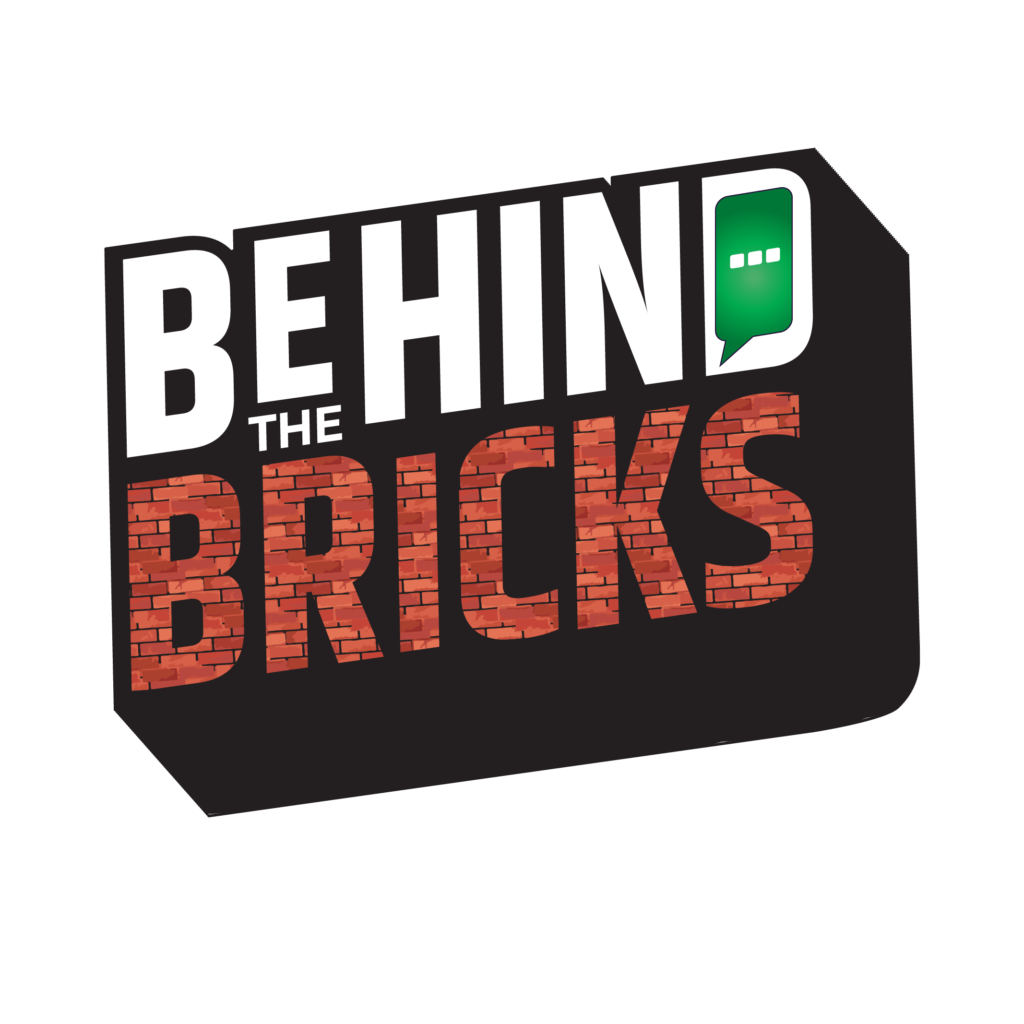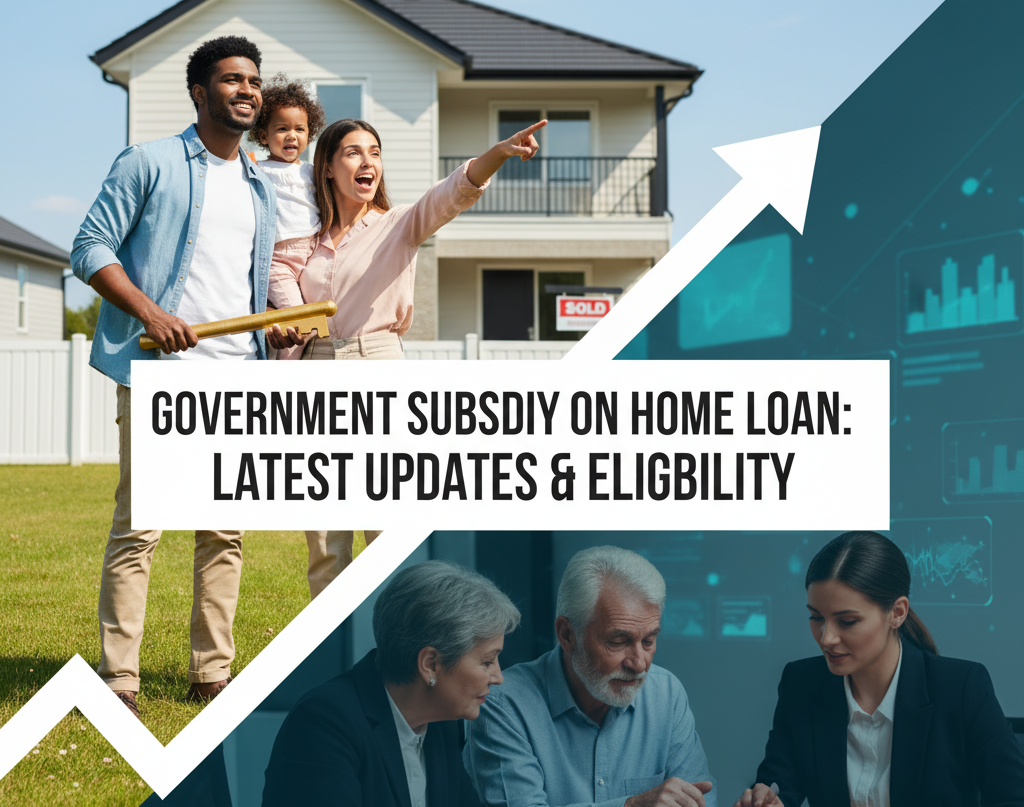For many people, home ownership is a dream. However, expensive house prices and interest costs often unfairly obstruct the middle- and lower-income classes from realizing this dream. To help these classes out, there are subsidy schemes provided by the central and state governments for housing loans. One of the most well-known among these is the Prime Minister’s home loan subsidy (via the PMAY / CLSS route).
This blog focuses on the present scenario of government subsidy on home loans, including recent major updates, eligibility criteria, the process of claiming it and a few things you must know before applying. It’s also important to consider your credit score for a home loan, as it can directly affect your eligibility and interest rate benefits
What Is a Home Loan Subsidy and Why Should It Matter?
It is basically a financial benefit provided by the government to eligible borrowers, usually an interest subsidy (which means lowering the effective interest rate of the home loan), thus reducing the burden of the monthly EMI and making it easier to buy a house.
A Prime Minister home loan subsidy is a flagship subsidy under the Pradhan Mantri Awas Yojana (PMAY) scheme, also known as Credit-Linked Subsidy Scheme (CLSS). It offers reduced interest rates for a portion of the loan to eligible applicants.
Since the subsidy cuts the interest rates, it greatly reduces the interest amount payable during the tenure and for lower- and middle-income families borrowing under a home loan, this housing loan subsidy can be a matter of affordability or financial burden. It can even be considered a homebuyer EMI hack, helping you save more on your monthly payments and reduce your financial stress
2024–2025 Government Subsidy Updates on Home Loans
PMAY-Urban 2.0 / Interest subsidy scheme ISS
One of the key updates that took place this year was the inception of PMAY-Urban 2.0 (and the new Interest Subsidy Scheme-ISS) with effect from 1 September 2024.
Some of the major amendments under this new scheme were:
- Subsidy is for home loans sanctioned and disbursed on and from 1 September 2024.
- Beneficiaries under the EWS, LIG and MIG groups may avail themselves of a subsidy for the purchase, re-purchase, new construction, extension, or repair of a house (depending on the category).
- The cap on the cost of a property (or house valuation) for subsidy eligibility, generally set by the state government, is mostly around ₹35 lakh for many borrowers against property valuation.
- The subsidy is credited in an upfront manner to the loan account through the lending institution (i.e., Primary Lending Institution or PLI).
Thus, beneficiaries whose housing loans are processed after 1 September 2024 should look into whether they fit under the ambit of the new scheme.
Subsidy Rates & Income Slabs (Somewhat Unchanged)
Though some details have changed, the broad outlines of the subsidy structure by income band still follow the older logic:
From CLSS / PMAY‐Urban scheme:
- For EWS / LIG categories: interest subsidy ~ 6.50% on loans up to ₹6 lakh.
- For the MIG I category: interest subsidy ~ 4% on loans up to ₹9 lakh.
- For the MIG II category: interest subsidy ~ 3% on loans up to ₹12 lakh.
- These subsidies are paid for a maximum period of 20 years or the actual tenure of the loan, whichever is lower.
- The upfront subsidy (which is the current value of interest savings) is also capped in several instances (about ₹2.67 lakh for EWS/LIG).
An interesting point is that some sources mention that, for MIG segments, the maximum subsidy amount is estimated to be ₹2.35 lakh for MIG-I and ₹2.30 lakh for MIG-II.)
Therefore, while the updated version (PMAY-Urban 2.0) may have some slight variations in details, broadly speaking, the main subsidy bands and rates are largely consistent with the earlier CLSS scheme.
Eligibility Criteria for Prime Minister Home Loan Subsidy
One must satisfy certain eligibility conditions to claim the Prime Minister home loan subsidy (i.e., government subsidy on home loan via CLSS/ISS). Here is a summary of some major eligibility criteria:
A) Income Limits / Slabs
- EWS: Annual household income up to ₹3 lakh.
- LIG: ₹3 lakh to ₹6 lakh.
- MIG-I: ₹6 lakh to ₹12 lakh.
- MIG-II: ₹12 lakh to ₹18 lakh
B) Property / House Criteria
- Typically, the carpet area of the house should not exceed prescribed limits (e.g., 30 sq m for EWS, 60 sq m for LIG, and 160 or 200 sq m for MIG segments).
- The property value/cost should lie within prescribed limits (e.g., many sources cite ₹35 lakh as a cut-off for object property value under the new scheme).
C) Loan / Applicant Conditions
- The home loan must be sanctioned and disbursed on or after 1 September 2024 under the updated scheme.
- The applicant (or any family member) should not already own any pucca house (or have taken the subsidy before).
- For EWS / LIG, generally, the house shall be in the name of a female applicant or jointly with a female.
- The applicant shall not have availed of any other Central/State housing subsidy before.
D) Loan Tenure and Component
- The subsidy is calculated on a loan tenure up to 20 years (even if the actual tenure is longer).
- For MIG categories, subsidy is normally only for the purchase (or repurchase) of a new/under-construction property and not for repair.
If an applicant fits all these conditions, he/she may be granted a housing loan subsidy under the government scheme.

How to claim the subsidy process?
Here is the stepwise outline for availing the Government Subsidy on Home Loans:
1. Apply for a Home Loan through a Recognized Bank / Housing Finance Company
Check if the lending institution is a participating / PMAY-registered PLI (Primary Lending Institution) that has an MoU with the central nodal agencies (such as NHB, HUDCO).
2. Submit Subsidy Application with the Loan Documents
Along with your home loan application, get the application for subsidy through the bank and submit the requisite documents (income proof, identity proof, property papers, declaration of no prior housing ownership, etc.).
3. Sanction and Disbursement
After the sanction and first disbursement (or as per scheme norms), the lending bank will submit the claim for subsidy through the nodal agency.
4. Upfront Subsidy Credit to Loan Account
The subsidy is paid upfront into the credit of your loan account through the bank/PLI (meaning that the principal is reduced effectively).
5. Monitoring and Verification
The central nodal agencies monitor the utilization. The balance subsidy, if any, is thereafter disbursed to banks/PLIs as per claims and utilization norms.
6. Regular Repayment with Reduced EMI / Effective Rate
The EMI thereafter indicates a reduced effective interest burden. Another homebuyer EMI hack.
Make sure to check with your lender on how exactly they treat the subsidy under the new rules post-1 Sept 2024, since there may be slight variations in the implementation details across institutions.
Things to Know/Limiting Factors
- The subsidy applies for the first 20 years or a lesser tenure and not necessarily for 30 years, should you go for a longer loan.
- If the value of the house or loan amounts exceeds the eligible caps (e.g., > ₹6 lakh, ₹9 lakh, or ₹12 lakh depending on the slab), the excess interest will be charged at usual interest rates (no subsidy).
- For MIG I / II, the subsidy usually applies only for purchase and construction, unlike repair and renovation work (which is allowed for EWS/LIG).
- There could be extra home-loan subsidy top-ups or variations by some states — check out your state housing finance authority for local schemes available.
- Since the implementation of the updated PMAY-U 2.0 / ISS rules is fairly recent (since Sept 2024), the procedures and acceptance by banks will take a while to cross-verify with the lending bank.
- An applicant or family should not already own a pucca house (i.e., an already constructed house of a standard).
- In the case of EWS/LIG, joint ownership / female ownership criteria have to be met.
- The subsidy is usually credited upfront, but disbursement of the balance amounts of subsidy by the government shall depend on claims and utilization norms from time to time by banks.
The Importance of Housing Loan Subsidy
- The housing loan subsidy reduces the effective cost of borrowing, which makes homeownership affordable to low- and middle-income earners.
- The Prime Minister’s home loan subsidy under PMAY is a flagship social inclusion scheme that is consistent with the government’s goal of “Housing for All.”
- By lowering EMI burden, it allows families to service home loans, while they fund other costs of living, encouraging formal housing and lessening slums / informal housing.
- For many aspirational first-time buyers, the subsidy is often the deciding issue of whether they enter the housing market.
Conclusion and Tips
Government-promoted subsidies for home loans have always looked at providing easier access to housing. With the recent rollout of PMAY-Urban 2.0 (from 1 September 2024), prospective borrowers should review the new rules and accordingly time their applications, documentation process and lender scheme participation.
Quick tips if you are considering applying:
- Check if your lender is a participating PLI and registered under PMAY / new ISS.
- Time your loan approval/disbursement to fall after 1 Sept 2024 (if planning under the new version).
- Ensure cluster in household income, property value and carpet area within prescribed caps.
- Keep your credit score for a home loan above 700 to ensure eligibility and faster approval
- EWS / LIG: meet with female ownership or joint ownership requirement.
- Submit all required documents (income proofs, no prior home ownership, property papers) to avoid unnecessary delays.
- Make sure to know and understand from your lender the mode of subsidy credit and its impact on your EMI payments.
For more interesting blogs, News & Updates, stay tuned with “Behind the Bricks”


Write Your Comment